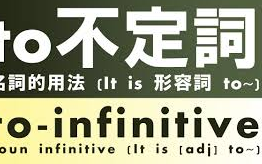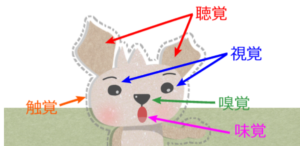
What are infinitives? 不定詞とは
to不定詞を使うと、1つの文と同じ内容を、もっと短く言い表すことができます。
言い換えれば、to 不定詞は「これから先のこと」について述べた文を
「圧縮」したものと言えます。
to 不定詞を正しく使うことで、IELTS,TOEFLなどのスピーキングや
ライティング試験では高評価を得ることができますのでしっかりと学習してください。

▮ to + 動詞の原形
to 不定詞の主な用法として文の中で名詞の働きをします (名詞的用法)
Example: to +eat = to eat
To eat is what I really need right now after that long travel.
In this example, you can say that the phrase: to eat, does not function as
a verb but as a noun. In addition, it is the main subject of the sentence
talking about what the speaker really needs right now. And that is, to eat.
<To eat は動詞としてではなく、名詞の働きをして文の主語になっています。>
「名詞的用法」の他にも「形容詞的用法」、「副詞的用法」もあります。
例:I have a lot of homework to do. 「形容詞的用法」
:She is working hard to buy a car. 「副詞的用法」
▮ to を使いわない「原形不定詞 bare infinitive」
知覚動詞 + O + 動詞の原形
Another thing that confuses us to determine infinitives from verbs
is when we use infinitives without “to”, making it appear similarly to
an action word but with another purpose. We call these “bare infinitives.
” Bare or zero infinitives are special kinds of infinitives without
the use of “to.” Most of these are preceded by special verbs
(verbs of senses) such as hear, see, feel, smell, and taste.

hear, see, feel,のような知覚を表す動詞は、目的語の後に動詞の原形を置いて
「Oが〜するのを見る/聞く/感じる」という意味を表すことでできます。
The pattern is: special verb + direct object + bare infinitive
この形を取る動詞は知覚動詞と呼ばれ、
<知覚動詞 + O + 動詞の原形>という形で使われます。
Example:
I hear the birds chirp. (hear+ the birds + chirp) I can hear the birds chirp.
(鳥の泣き声が聞こえる)
Instead of saying I can hear the birds (to chirp),
we take out the word “to” and retain the main verb.
Another example: I hate to see my boyfriend smoke.
私はボーイフレンドがタバコを吸うところを見るのが嫌だ
Note that with bare infinitives, we can never use the s-form of the verb
even when pertaining to a singular object.
▮ When to use Gerunds and Infinitives? 動名詞と不定詞使い分け

Though we already learned the functions of both, we have to keep in mind
that there are some standards or rules set to determine
whether to use gerunds or infinitives.
動名詞 ➡ 習慣的行為、や一般論
We use gerunds if the actions are completed and fixed or when it refers to an activity.
Example: I like reading a lot. 私は多読が好きだ
不定詞 ➡ これから先のこと、可能性のあること
We use infinitives if the actions are not yet started (future), unreal, and abstract.
Example: I like to bake a cake on your birthday.
▮ 目的語が動名詞と不定詞で意味が異なる他動詞
forget / remember/regret /try / stop
Keep in mind as well that choosing between gerunds and infinitives can change
the meaning of the entire sentence.
「remember 」
Example: I remembered to bring my coat.
= I remembered that I had brought my coat.
コートを忘れずに持って行ったことを覚えている
I remembered bringing my coat.
= I brought my coat and I remembered it
コートを持参したことを思い出しました
「regret 」
Example: I regret rejecting your offer.
あなたの申し出を断ったことを公開しています。
I regret to say that we must reject your offer.
残念ながら、あなたの申し出をお断りしなければなりません。
Therefore, it is important that we know their functions and differences
although they both act nouns in sentences.







